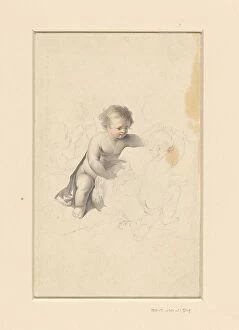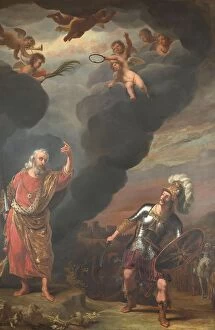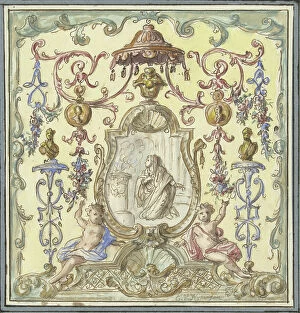Putto Collection (page 8)
"Putto: The Cherubic Symbol of Beauty and Mythology" In the realm of art, the putto has been a recurring motif
All Professionally Made to Order for Quick Shipping
"Putto: The Cherubic Symbol of Beauty and Mythology" In the realm of art, the putto has been a recurring motif, captivating audiences with its innocent charm and ethereal presence. From classical masterpieces to risqué engravings, this cherubic figure has left an indelible mark on artistic expression. One such iconic portrayal is found in Alexandre Cabanel's "The Birth of Venus" (1875), where a putto hovers above the goddess as she emerges from the sea foam. This celestial being adds an enchanting touch to Botticelli's timeless masterpiece. Similarly, in "The Feast of Venus, " we witness a playful gathering of putti surrounding the Roman goddess herself. Their mischievous smiles hint at their role as Cupid's helpers, spreading love and desire throughout ancient mythology. Moving forward through time, Gustav Naujok presents us with his depiction of St. Cecilia (1891). Here, a putto accompanies the saintly figure while she plays her musical instrument – symbolizing heavenly harmony and divine inspiration. However, not all representations are quite so angelic. In an engraved title page from an English priapic novel (1783), we encounter more provocative imagery featuring lascivious putti engaging in amorous pursuits. Such works pushed societal boundaries and explored themes that were considered scandalous at the time. Aubrey Beardsley's illustrations for "The Savoy" further challenge conventions by depicting whimsical yet erotic scenes involving these mythical beings. These intricate drawings showcase Beardsley's unique style while exploring sensuality through the lens of fantasy. Yet amidst these contrasting portrayals lies George Romney's "Lady Hamilton as the Goddess of Health. " Painted around 1790 but rediscovered in 1920s Britain, this artwork depicts Emma Hamilton embodying vitality personified by a charming putto accompanying her graceful form. Beyond paintings and engravings, putti have also found their way into architectural ornamentation.















































